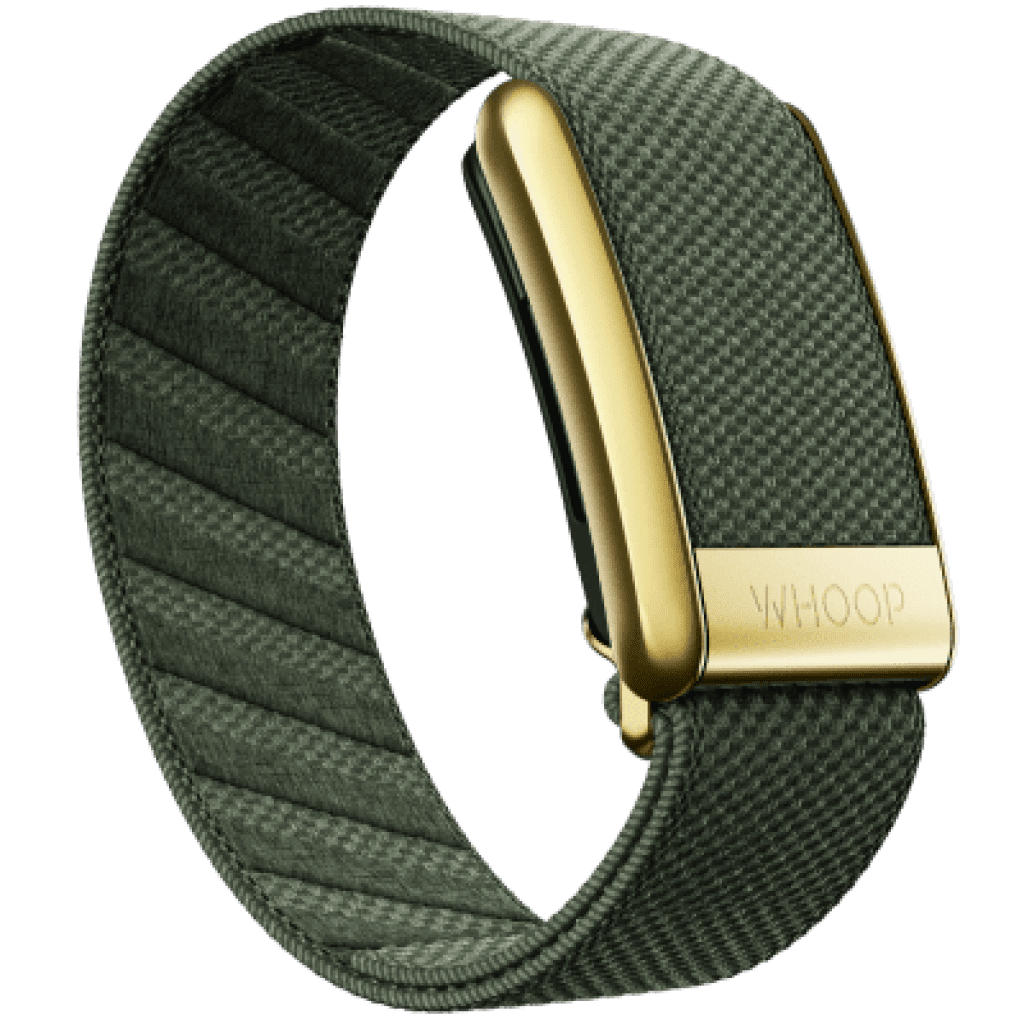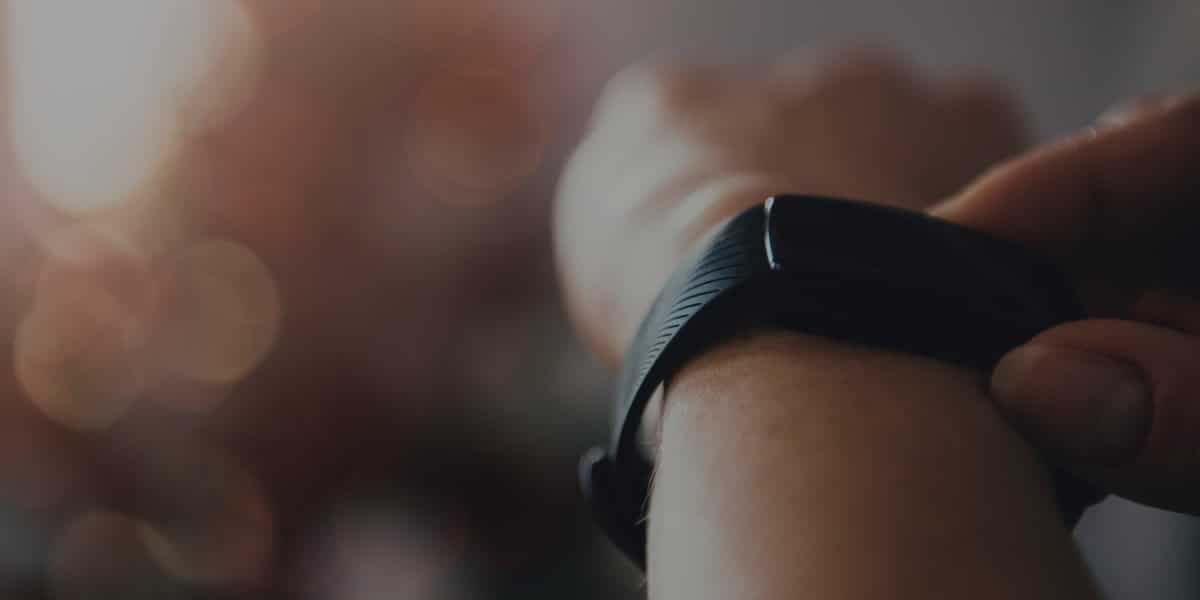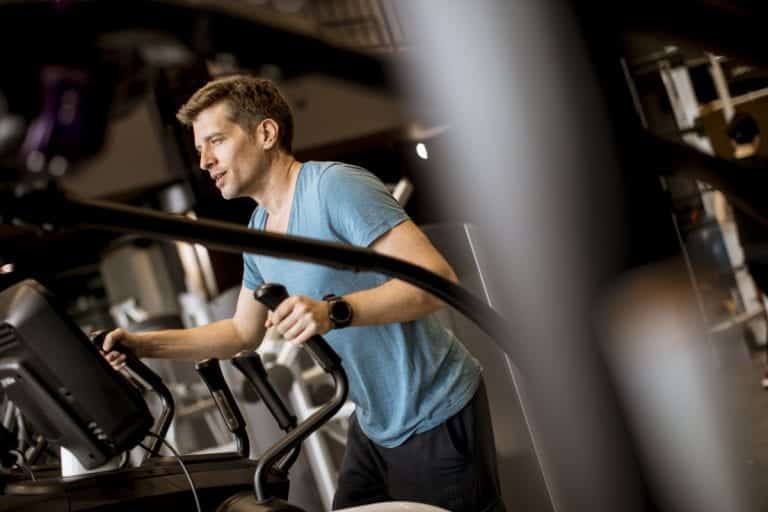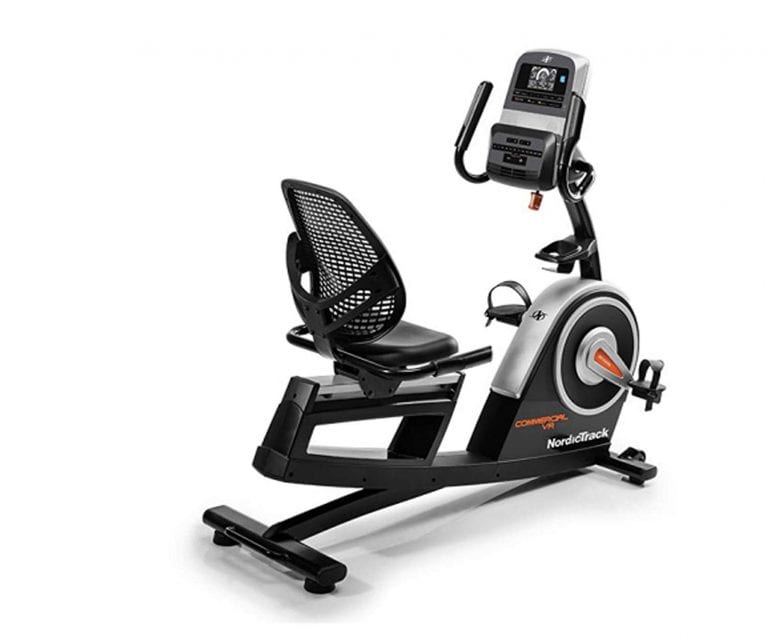Best Fitness Trackers
I love fitness trackers. I love anything that will give me useable data to optimise my workouts.
My main love comes from the pedometer element found in all types and levels of fitness tracker. I walk a lot (mostly with my dog) outside of my actual training, so I need to know how much energy I’m using. Otherwise, I could easily overeat, and put on unwanted body fat, or undereat, leaving me without the energy I need to work out effectively and recover optimally.
Then there is the heartrate monitor. Do you want to know how hard your circuits are really pushing you? Do you want to ensure you’re always training in the Orange Zone? Do you want to set yourself a target for a minimum time spent at a certain heartrate through the day? These are all very reasonable, decent goals. A heartrate monitor will enable them; it will help to optimise your fitness.
Fitness trackers are simple and wearable. They are less expensive and less obtrusive than full smart watches, whilst giving you all the data you could ever want, right there at your fingertips.
Not all trackers are created equally, however. Some are simpler than others (sometimes in a good way, sometimes not). Some are expensive for a good reason, some are overpriced; some are an absolute bargain.
How do you make sense of it?
We’ve got you covered as we assess the best fitness trackers available in the UK today.
| Image | Product | Features | Price |
|---|---|---|---|
|
Top pick
|
Fitbit Charge 5 |
|
Check Latest Price |
 |
Fitbit Sense Advanced |
|
Check Latest Price |
 |
Garmin Fēnix 6 Pro |
|
Check Latest Price |
Different Types of Fitness Trackers
Each fitness tracker is different. Each will give you something different. However, we can broadly categorise fitness trackers into three different types.
Firstly, we have basic fitness trackers. These are essentially pedometers. They keep track of the approximate number of steps you take and calculate the distance you’ve travelled in any given period. They are decent for walkers and runners who need to keep track of their distances, or for anybody looking to hit a minimum number of steps per day as part of a challenge or weight loss routine.
However, basic fitness trackers seem a little redundant to me. They really do much that a free app loaded to your smartphone can do.
Then we step up to heart rate monitoring trackers. They will count your steps and calculate the distance you’ve travelled, as a basic fitness tracker would. However, they also include heart rate sensors so that you can check your pulse whenever you want, record what it does over the course of a workout, or an entire day, and more accurately determine calories burned in any given period.
Finally, we have heart rate monitoring trackers with GPS included. They can do everything a regular heart rate monitoring tracker can do, whilst additionally being able to communicate with satellites and thus triangulate your position anywhere in the world.
I would suggest anybody who goes mountaineering, hiking off-piste, or cycling in the countryside uses one of these. The data will be invaluable, of course, but you’ll also have the added safety net of knowing exactly where you are (and being able to tell emergency services exactly where you are if needed!).
How To Choose The Right Fitness Tracker For You
Firstly, if you’re looking for the right fitness tracker, you should know the difference between a fitness tracker and a smartwatch. They are not the same thing, as many people believe.
Almost all smartwatches, including Apple and Samsung’s latest models, are also fitness trackers. They do everything a fitness tracker will do, in addition to all the other fancy techiness they include. This means that they can keep track of all the data a fitness tracker would, including steps taken and calories burned, most often with heart rate and sleeping patterns as a minimum.
There is therefore no need to invest in a fitness tracker if you have a smartwatch.
However, smartwatches are usually very pricey, kind of large, over-engineered for most people’s purposes, and can be very intrusive (nobody wants to be taking calls, texts, and email as they workout, do they?).
Fitness trackers can be relatively inexpensive, are simple and straightforward, and have pretty small, monochrome displays. Therefore, if you want to save yourself some money, and/or want to keep the rest of the world at bay whilst taking some simple, useful metrics, then a fitness tracker is for you.
Most fitness trackers will take the same basic metrics: things like steps taken, distance travelled, calories burned, and so forth. Many will also track a vast selection of sports, either automatically or otherwise. Plenty will have their own connectivity or app which will connect you to the wider community.
Beyond this, you will need to work out what you want from your tracker.
If you just want a pedometer, great – go for a basic tracker (though, as above, a smartphone and a free app would be just as good).
Most people will want heart monitoring trackers. This is what I particularly like. Heartrate is a fantastic proxy for effort level, so you can see when you’re really pushing yourself, what that looks like, and which forms of exercise best suit your needs. This kind of data is invaluable.
As above, hikers and other outdoor types will benefit from the added GPS element.
You should look to spend between around £50 to £200 on your fitness tracker, depending on what you need from it and how good it is. A few brands go above this (some feature on this list), but usually for good reason (the items on this list all deliver great quality and utility), but you should always be able to find something to fit your budget.
Our Top 7 Fitness Trackers
Fitbit Charge 5
I really like Fitbit. I’ve used and reviewed a fair few of their products and have included a few on this list. They are always a pleasure to work with, packing a hefty punch for next to nothing.
Enter the Fitbit Charge 5, one of my favourite trackers from their line.
It ticks a lot of boxes with the basics. It’s the real deal, offering full, 24/7 heart rate monitoring and feedback, along with built in GPS and automatic activity tracking.
The Fitbit Charge 5 is also water resistant up to 50m, making it perfect for swimmers, multi-disciplined athletes, and even hikers (I live in Scotland – trust me, water can feature heavily in any hike!), You get up to a full week of battery life on full charge, which is great for anybody looking to lead their most active life with something that can keep up.
Finally, it’s incredibly smart. It’s fully compatible with iOS 13 or higher and Android OS 8.0 or higher, so you can sync up pretty much any smart phone with it, and it features  daily readiness alerts and reminders to move (great for office drones who would otherwise spend hours unthinkingly planted on their behinds!). There are 20 exercise modes and it creates a workout intensity map.
daily readiness alerts and reminders to move (great for office drones who would otherwise spend hours unthinkingly planted on their behinds!). There are 20 exercise modes and it creates a workout intensity map.
The display is full colour and very vibrant, making it quite a cheerful piece of tech to use on a daily basis. It’s also very user friendly, offering a very navigable interface.
Health is as important to Fitbit as fitness, too, which I love.
Firstly, a Fitbit Charge 5 can help to improve your sleeping habits. As sleep is one of the biggest, most profound variables in any health and fitness setting, this is a big deal. It gives you a sleep score, tracks your sleep stages, and can detect snoring and noises. If you’re struggling to sleep, this data is worth a great deal. You can also set silent alarms and a smart wake function, easing you into your days a little more easily, as well as using a do not disturb mode for extra peace.
Then there are various explicit health functions. The Fitbit Charge 5 comes with stress management tools, EDA sensors, an ECG app, a health metrics dashboard (including Sp02, heart rate variability, and skin temperature tracking), and a heart rate zones measure. It even has a menstrual health tracker.
All of this should help you to live your best life, as healthy as possible.
All of this, and it’s as cheap as anything – it’s one of the most economically viable models out there.
Check Latest Price of Fitbit Charge 5
Fitbit Sense Advanced
Let’s take a look at one of Fitbit’s pricier options now, in the form of the Fitbit Sense Advanced.
Obviously, it will give you more than the Charge 5 will, but at a higher price point (though it’s still far from the most expensive item on this list).
The Sense Advanced is a very easy gadget to live with. It is incredibly quick to charge, and each charge will give you six or more days of battery life. As with the Charge 5, it’s compatible with most smart phones, working well with iOS 12.2 or higher and Android OS 7.0 or higher.
It also has some handy features on top of its baseline bits and pieces (full heart rate and GPS).
 For instance, it comes with an EDA sensor and stress management setting. The on-wrist EDA Scan app detects electrodermal activity, a key stress indicator, so that you can see how stressed out you are and what situations are more calming for you.
For instance, it comes with an EDA sensor and stress management setting. The on-wrist EDA Scan app detects electrodermal activity, a key stress indicator, so that you can see how stressed out you are and what situations are more calming for you.
It also has a very good ECG (Electrocardiogram) App. This can track your heart for atrial fibrillation (a heart rhythm irregularity), which you can then share with your doctor. The app is only available in certain countries and isn’t intended for use by people under 22 years old. However, where relevant, it’s incredibly useful.
You can also measure your skin temperature change over time using the Sense Advanced’s temperature sensors. These log your skin temperature each night, so that you can track it over time. This might be particularly useful for tracking menstrual cycles or the effects of menopause.
Other than these, the extra cost comes from a free 6-month Fitbit Premium membership and a premium design to the watch itself. The membership allows you access to personalized insights, advanced analytics, guided programmes, mindfulness and sleep tools, workouts, and more. The design is beautiful – it is a polished stainless steel ring, custom AMOLED display, laser-bonded Corning Gorilla Glass 3 and innovative biosensor core.
I don’t think it’s worth buying over a cheaper model like the Charge 5, for most people. However, if you want something that really does look nice, or if the extra sensory tech would be useful, by all means go for it. It’s a very strong offering.
Check Latest Price of Fitbit Sense Advanced
Fitbit Versa 3
Once more to Fitbit (they are sort of masters in the market).
The Fitbit Versa 3 costs about the same as the Charge 5, coming in usually at a little over a hundred pounds. It offers very similar elements to the Charge 5, too.
The Fitbit Versa 3 is compatible with iOS 12.2 or higher and Android OS 7.0 or higher, as it should be.
 The battery life is only a little lacking compared to the Charge 5, with up to six days on a full charge (an incredibly fast charge, I should point out). It comes with built-in GPS, making it perfect for anyone tackling the great outdoors as part of an active lifestyle. You can even see a workout intensity map which shows you your route and effort expended in the Fitbit’s app when you’re done (I love this element).
The battery life is only a little lacking compared to the Charge 5, with up to six days on a full charge (an incredibly fast charge, I should point out). It comes with built-in GPS, making it perfect for anyone tackling the great outdoors as part of an active lifestyle. You can even see a workout intensity map which shows you your route and effort expended in the Fitbit’s app when you’re done (I love this element).
The Fitbit Versa 3 uses a 24/7 heart rate to better track calorie burn, optimise workouts and uncover and track personalised health trends. You can also set it to alert you as to which heart rate zone you’re in so you can see if you’re working hard enough to reach your goals (you’ll be able to spend plenty of time in the ‘Orange Zone’, that holy grail of training heart rate ranges!).
It’s what any good fitness tracker should do, just done quite smartly and quite elegantly.
For instance, you can store and play music and podcasts with the Fitbit Versa 3, including access to Spotify and Deezer (you need to buy your subscriptions to these separately). You can also use Amazon Alexa as a built-in voice assistant. This will help you check the weather, set reminders, control smart home appliances and more from your watch.
If you’re in the market for a low priced, incredibly intelligent fitness tracker, this could be the one for you.
Check Latest Price of Fitbit Versa 3
Whoop Band
Whoop have a slightly different business plan to their competitors. They have released their Whoop 4.0, but you can’t buy it. It’s only available as part of a subscription package, much like a phone contract. You get the Whoop 4.0 included in the monthly membership cost, without having to pay anything for it upfront.
Whoop membership starts at around eighteen pounds, though can vary depending on the package you go for, etc.

However, it is a lot smarter than it looks.
Though pretty popular, the Whoop 3.0 was far from a perfect tracker. Plenty of people complained about it. It wasn’t very accurate, and many felt a bit let down by the lack of display.
Well, Whoop listened, and they upped their game accordingly. They have designed and included a new sensor, which is far, far more accurate. The heart rates it showed me were commensurate with exertion: as a PT, I generally have a good idea of what someone’s heart should be doing at any effort level, and the Whoop 4.0 was spot on. This upgraded sensor configuration features three green, one red and one infrared LED (for a total of five), four photodiodes, and advanced algorithms to improve accuracy and heart rate measurements.
Whoop gadgets rely on measuring strain. It measures effort and gives you a Strain Score, which is crucial to its app’s functioning. This score runs from 0-21 and the app will give you a recommended target each day. I love this – it shows you, in very real terms, how your workouts should feel and what they should look like.
The Whoop 4.0 is an elegant, lightweight take on the traditional fitness tracker. It uses a unique way of showing where you need your workouts to take you, is incredibly reliable, and won’t break the bank all at once. I really, really like it.
See Latest Price of The Whoop Band
Garmin Fenix 6 Pro
The Garmin Fenix 6 Pro is one of the more expensive fitness trackers out there. Giving you very little change from four hundred quid, it’s roughly triple the price of the Fitbits Charge 5 and Versa 3.
What do you get for the money, though?
Well, firstly, a very nice-looking wrist piece. An Omega tells the time as accurately as any twenty-pound watch, but it’s all about the finery, the elegance, and, let’s be honest, the kudos. Well, fitness trackers are no different. You pay more for a more refined article.
 The interface is great – it’s a very readable 1.3 (33 mm) display made of Corning Gorilla Gl 3, gives a permanent display, and is all enclosed within a durable stainless-steel bezel.
The interface is great – it’s a very readable 1.3 (33 mm) display made of Corning Gorilla Gl 3, gives a permanent display, and is all enclosed within a durable stainless-steel bezel.
It’s not all form over function, however. The Garmin Fenix 6 is amazing at what it does – namely, enhancing your workouts and allowing you to be fitter and healthier for far less effort.
Firstly, you’ll never get lost with one. Thanks to the pre-installed TopoActive Europe map with extensive navigation functions, you will always find your feet. You can also find global ski maps with the Garmin Fenix 6, perfect for any jet setting lifestyle.
You can monitor your oxygen usage, your current training load, as well as any of the usual data points you would want from a fitness tracker.
There are good media options, too. You can use streaming services such as Spotify, Deezer and Amazon Music via a Fenix 6S PRO (you’ll need a separate subscription). And this doesn’t wear the battery down at all – though it only has a three-day lifespan when using GPS UltraTrac mode, in Smart Watch mode you can get a full fortnight out of it. This can be boosted to up to 48 days on energy-saving mode.
It’s priced accordingly, but it really does pack a punch.
Check Latest Price of Garmin Fenix 6 Pro
Apple Watch Series 7
I couldn’t look at smart technology without dipping into Apple’s catalogue. This took me to the Apple Watch Series 7, which is as nice looking and expensive as you would expect from the makers of the iPhone and Mac.
It’s built for hard use, too. The Always-on Retina display has nearly 20% more screen area than Series 6, which makes things a lot easier to figure out during hard training. It’s also tough. In fact, the Series 7 boasts the most crack-resistant front crystal yet on an Apple Watch. It makes use of IP6X dust resistance, and swim proof design. There really isn’t much you can do that would see this break.
 The Series 7 is also as smart as you would expect. You can take calls and reply to messages from your wrist, taking us into full on smart watch territory. I don’t particularly value this in a gym setting, but it can be really useful for outdoor pursuits.
The Series 7 is also as smart as you would expect. You can take calls and reply to messages from your wrist, taking us into full on smart watch territory. I don’t particularly value this in a gym setting, but it can be really useful for outdoor pursuits.
It also takes a range of biometrics to make it useful in getting after that healthy, active lifestyle. You can measure your blood oxygen levels with the Series 7’s powerful sensor and app, take an ECG on the spot, anytime, find out true readings for your high and low heart rate, and receive irregular heart rhythm notifications.
The Fitness app (compatible with iPhone 6s or later with iOS 15 or later) allows you to track your daily activity and uncover your trends. It can even tailor track you through new exercise styles like tai chi and Pilates, alongside old trusties like running, yoga, swimming, and dance.
It’s expensive and requires investment in other Apple products to make the most out of it. This is what we’ve all come to expect from Apple, though. If you are an Apple devotee, you’ll love it. It really is a decent piece of tech. If you’re not into Apple, though, and don’t want to fork out on updating all your gadgets, maybe something else could work better.
Check Latest Price of Apple Watch Series 7
Samsung Galaxy Watch 4
If you’re looking for an alternative to the Apple Series 7, you could do a lot worse than the Samsung Galaxy Watch 4.
There are a few things I really like about the Samsung Galaxy Watch 4.
First up, it claims to be able to measure body composition. I love this, though it’s not all that true. You should always take these kinds of measurements with a pinch of salt. Devices like this use electrical impediment to measure body fat – they send a current through your body, and can judge how much of your body is fat vs muscle and bone by how quickly the current completes its circuit.
 It’s clever. It’s also very unreliable. The tech isn’t sensitive enough yet to trust fully. There are also plenty of variables that can skew the score (hydration being key amongst them!).
It’s clever. It’s also very unreliable. The tech isn’t sensitive enough yet to trust fully. There are also plenty of variables that can skew the score (hydration being key amongst them!).
However, it’s still useful. If you’re 24% body fat and the impediment tells you you’re 28%, it will consistently tell you you’re 28%. Therefore, if you lose fat and come down to 20%, the impediment will come down to around 24%. You won’t have an accurate reading, but you will be able to track your progress very well.
Aside from this, the Galaxy 4 gives you everything else a fitness tracker should. You can track your fitness programme, compete with other people wearing watches in a series of challenges, count steps, check calories, and stay on the grid with GPS. It can measure your blood pressure in real time and can take ECGs with easily calibrated, pretty accurate sensors. You can track and analyse your sleep patterns and even enjoy some decent app connectivity.
It’s not cheap. A Galaxy 4 will set you back a couple of hundred. It’s still about half the price of Apple’s offering, though.
Check Latest Price of Samsung Galaxy Watch 4
Verdict
The Apple Series 7 and Samsung Galaxy 4 are objectively fantastic trackers. They are intelligent, well made, lovely to look at, and give you a great degree of utility. You pay the price – you won’t have much spare change after investing in one! – but they are good.
Likewise the Garmin Fenix 6. It’s a statement watch, perfect for looking good whilst enjoying very decent functionality.
However, unless these things are real priorities for athletes, I would always push people towards some of the more reasonable options. I always love to see Fitbit doing well. They are astonishingly good and very functional for next to nothing. They punch above their weight with aplomb and finesse. For my money, it’s got to be the Charge 5, though any on this list will serve you well.
Or if you want a subscription, without a massive upfront bill, and incredibly good software, Whoop are always a good shout. Their upgraded sensors have made them a real player.








